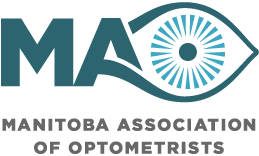
When a cloudy area develops within the normally clear lens of your eye, it is called a cataract. Cataracts vary from small areas of cloudiness to large opaque areas that cause a noticeable blurring of vision. Cataracts are most often found in people over the age of 55, although they are occasionally found in younger people, including newborns. If a child is born with a cataract, it is referred to as a congenital cataract.
Cause
As we age, the lenses in our eyes harden and may also turn cloudy. This cloudiness interferes with the light coming into the eye and causes blurred vision. Cataracts may develop due to advancing age, eye injury, or health problems such as diabetes. Other risk factors include excessive sun exposure, cigarette smoke, family history, and the use of certain medications such as corticosteroids.
Prevention
Currently, there is no proven method to completely prevent cataracts from forming. Wearing quality, UV blocking sunglasses will help protect your lenses from sun exposure that can speed up cataract formation. Smoking should be avoided. A diet rich in antioxidants, such as vitamins A, C, E, Zinc, Selenium, and Magnesium, can also be beneficial.
Symptoms
Cataracts may develop quickly, but usually form gradually over a period of several months or years. They can often develop more rapidly in one eye than the other. Indications that a cataract may be forming include haziness and blurred, distorted or even double vision; an increasing need for more light; and sensitivity to bright light, especially at night. A progressive change in distance and/or near vision may also occur. Cataracts develop without pain or redness.
Diagnosis
During your eye examination, your optometrist will analyze the opacity of your lens and determine if you have a cataract.
Treatment
In the early stages of a cataract, where vision is only minimally affected, your optometrist may prescribe new lenses for your glasses to provide you with the sharpest vision possible. Some cataracts never progress to the point that they need to be removed. If the cataracts do interfere with your daily activities, and glasses cannot improve your vision, then cataract surgery will be considered and your optometrist will refer you to an ophthalmologist (eye surgeon).
Cataract surgery is performed by an ophthalmologist after consultation and evaluation of the patient’s ocular status. The procedure involves removal of the cloudy lens (the cataract) and implantation of a new artificial lens (intra-ocular lens). Usually the surgery is done with local anaesthetic in 30 minutes or less. Healing and recovery can take up to eight weeks, at which time vision should be stable. Generally it is necessary to refine vision with glasses or contact lenses after the eye has stabilized.
Cataract surgery is a highly developed surgical procedure that continues to improve with advances in technology. Cataract surgery is thought to be 90-95% successful in restoring functional vision.
